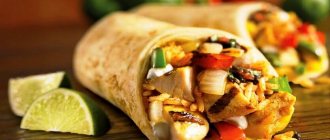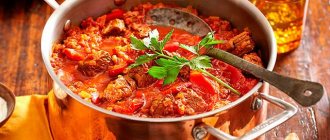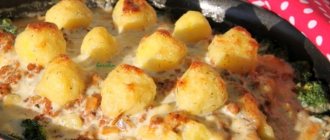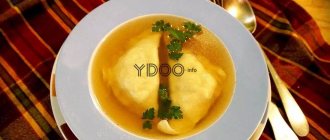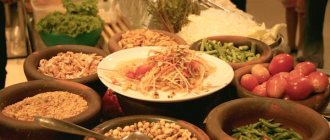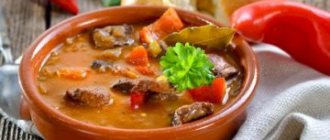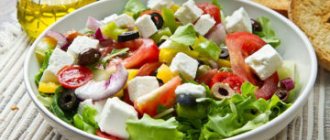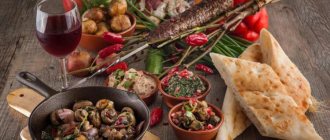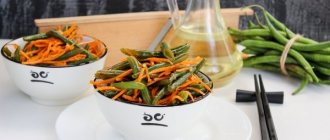For many years, the British have been faithful to their culinary traditions as well as to other areas of their life. The recipes of English cuisine are very diverse, like those of other peoples of the world. Previously, the average Englishman began his day with scrambled eggs and fried bacon, as well as fresh tomatoes, sausages and mushrooms. This way of starting the day continues to this day, but modern work schedules have added corn flakes and breakfast cereals such as Weetabix to morning meals. After breakfast, the British usually drink tea with toast. Lunch, or as they also say - second breakfast, began at half past one, followed by a light lunch at five o'clock, and dinner was served at seven o'clock in the evening.
At the moment, English snacks and triangular sandwiches are popular, which have become one of the unchanging traditions of the British. Triangular sandwiches with cucumbers on bread are considered a classic. Cream soups and broths are considered popular first courses, but they are not an invariable part of every day meals. Despite the fact that English chefs, who are well aware of the basic recipes of English cuisine, are trying to accustom the common people to the use of herbs and spices, this type of product is rarely used in classical cuisine.
Previously, the British consumed a lot of veal, lamb, pork and beef. The meat of these animals was baked with blood in a frying pan. The meat was always served with gravy, baked and boiled vegetable products, as well as Yorkshire pudding and pickles. Now all this is usually served on Sundays.
Sweet and savory puddings, served with meat or as a dessert, casserole with minced fish or lamb, as well as frying, are also traditional recipes of English cuisine. Many traditional dishes are eaten only on holidays. For example, this could be Christmas pudding for Christmas or cross buns for Easter. Among alcoholic drinks, porter beer and black ale are popular. Beer from a barrel is especially valuable, as are rum, brandy, whiskey and port. We present you a list of 11 recipes for English cuisine.
Boiled shrimp in creamy mushroom sauce
Products and ingredients:
- 900 grams of shrimp
- 110 grams of mushrooms (champignons)
- 50 grams of flour
- 1 onion
- 275 milliliters dry white wine
- 50 butter
- 100 milliliters sherry
- 150 milliliters cream
Preparation of the recipe Boiled shrimp in creamy mushroom sauce:
Wash and clean the shrimp. Chop the washed and peeled mushrooms. Peel the onion and chop finely. Pour the indicated amount of white wine into the prepared pan (two 150-gram glasses). Place the shrimp with chopped onions and mushrooms in a saucepan and cover it with a lid. Cook for 15 minutes, without letting it boil, over low heat. Remove the pan from the heat and strain its contents through a sieve. Place the broth in a separate bowl.
Take a saucepan, put oil in it and put it on low heat. After the butter has melted, stirring, add the flour and immediately, continuing to stir, pour in the prepared broth, then the sherry. Cook, stirring, until thickened. Assess the condition of the sauce - if it is too thick, dilute it with a little milk. Continuing to stir, add the strained shrimp, mushrooms, and onions into the sauce, and then carefully add the cream. Gently stir the contents of the saucepan several times. Salt and pepper - to taste. The dish is ready.
If you are not serving the shrimp immediately, reheat them slightly over very low heat before serving. Serve shrimp in creamy mushroom sauce in cocotte makers or special shells (if available). Mashed potatoes are suitable as a side dish.
Yorkshire pudding | Yorkshire pudding
The snack is so popular that the first Sunday in February is even celebrated as Yorkshire Pudding Day in the UK. There's nothing unusual about it itself - it's essentially just an empty cupcake. In this British dish, it's all about the filling. Yorkshire pudding in England is usually served with a roast, in Northern Ireland it is filled with mashed potatoes with beef and vegetables, in Scotland it is filled with lamb or sausages and potatoes. For vegetarians in the UK, there is sure to be a snack with beans or vegetables. There are really many options for the dish, each good in its own way.
British pudding “Bread and butter pudding”
Products and ingredients:
- 1 stale loaf
- 50-70 grams of butter
- 2-3 eggs
- 200 grams of cream or sour cream
- 50 grams of sugar
- 70 grams of currant (apricot, orange) jam
- 10 grams vanilla sugar
- 30 grams potato starch
Preparing the recipe for British pudding “Bread and butter pudding”:
Cut the stale loaf into slices. Spread butter on half the slices and jam on the other half. Grease a baking dish with vegetable oil and lightly sprinkle with flour. Place the prepared slices in the mold so that one slice looks “at the back” of the other, i.e. ladder
Prepare the pudding filling: beat the eggs with sugar with a whisk, add sour cream or cream, vanilla sugar, starch, beat with a whisk again. Pour the prepared sauce over the bread slices in the mold. Preheat the oven to approximately 170 degrees in advance. Place the prepared pan in the oven for about 20 minutes. At the very end, you can increase the heat for 2 minutes so that the pudding browns. Simple, tasty and fast.
Lemon cream
Products and ingredients:
- 4 lemons
- 4 eggs
- 40 grams of butter
- 200 grams of sugar
Preparing the Lemon Cream Recipe:
Zest two lemons using a grater. Squeeze the juice from all four lemons. Add sugar to the zest and stir. Add lemon juice. Beat the eggs in a blender or with a broom, combine with lemon juice. Set the mixture aside for half an hour until it becomes fragrant. Strain through a fine sieve to remove zest and large protein particles, if any. Pour the strained mixture into a saucepan, add butter and cook over low heat, stirring with a wooden spatula, until the cream thickens. Pour the finished cream into clean jars. Store the cream in the refrigerator.
Creamy plum pudding with raisins, cooked in a napkin
Products and ingredients:
- 3 cups grated wheat bread
- 1 lemon
- 60 grams of flour
- 6 eggs
- 2 tablespoons candied fruits
- 1 cup melted butter
- 200 grams of sugar
- 75 milliliters rum or wine
- A handful of seedless raisins
Preparing the recipe Plum pudding with creamy raisins, cooked in a napkin:
Take six eggs, separate the yolks. Add sugar to the yolks and puree until white (you can do this procedure in a blender). Melt the butter until you have one cup. Cool it and add it to the yolks. Grind the wheat bread on a grater and add it to the yolks with butter.
Rinse the raisins well. Grate the lemon zest from one lemon. Add lemon zest, raisins, flour, candied fruits to the mixture of yolks and bread, pour in rum or wine. Lastly, beat the whites until white and carefully mix them with the remaining ingredients. Stir again and place the entire mass on a linen or cotton napkin greased with oil. Boil water in a saucepan. Tie the ends of the napkin into a knot and place it in a pan of boiling water. Cook the pudding for at least an hour. Remove the finished pudding from the pan, untie the napkin and place on a plate. Serve plum pudding with sweet sauce.
LiveInternetLiveInternet
Through England - a relatively small piece of land - Celts, Picts, Romans, Vikings, Saxons, Angles, and Normans successively passed through (and stayed) until 1066. And all of them in one way or another influenced what later became English cuisine. The 20th century brought with it immigrants from India, Pakistan and other Asian countries, and its last decade brought a huge number of visitors from Eastern Europe. At the same time, at least until the last 20-30 years, English cuisine desperately resisted external influence. According to the British's closest neighbors, the French, it remained boring and conservative. This cuisine developed as if on its own under the influence of industrial revolutions and due to the expansion of colonies. However, the majority of the population remained firmly convinced that there was no need to change what suited their fathers, grandfathers and great-grandfathers quite well. Despite this, the culinary history of England is very interesting, especially when viewed from a historical perspective, linking the emergence of certain culinary trends with changes in the political or industrial sphere. Of all the historical periods, let's focus on three: the Middle Ages, the Victorian era and the first decade of this century. Each of these periods brought significant changes to English culinary habits. The Middle Ages Historians believe that the medieval period in England began with the fall of the Roman Empire and ended with England's separation from the Roman Catholic Church in 1533 during the reign of Henry VIII. All this time, culinary habits were closely connected with the church calendar. Moreover, what the nobility ate differed significantly from the diet of the lower classes, who were forced not only to fast (at best on salted fish), but also did not have access to fresh food during the cold season. By the 15th century, strict church regulations regarding food had loosened somewhat, but Friday still remained a day of obligatory fasting. By the way, it was the forced adherence to religious institutions that led to the complete disappearance of beavers in England, since, as an animal that uses its tail when swimming, the beaver was conventionally classified as a fish, and therefore was suitable for consumption during Lent. Let it not surprise anyone that water, as the most common and, it seems, cheapest way to quench thirst, is mentioned extremely rarely. Here it should be taken into account that ideas about hygiene and microbes in the Middle Ages were very relative, and therefore no one boiled water and it potentially carried a considerable number of pathogenic organisms. Beer, due to its manufacturing technology, was relatively safe. Everyone, including small children, drank it from breakfast to dinner. The concentration of alcohol, however, in that drink was low, so there was no general alcoholic imbecility, which is so feared by today’s doctors.
The standard breakfast of a wealthy city dweller, successful artisan, monk or even nobility was often limited to beer, bread and cheese. The diet as a whole could hardly be called varied, and in one form or another everyone ate meat, poultry, fish and vegetables: the poor people in a simple way, the nobility - with delicacies. As an example, I will give one recipe adapted to modern tastes by the British specialist in medieval cuisine, Maggie Black. Capon (or chicken) crowned with eggs For 6 people invited to your personal medieval banquet, you will need: One large chicken for frying - 2.5 - 3 kg chicken fat or butter 850 ml chicken stock (you can just use a stock cube, but more decently) 1/4 teaspoon saffron 125 g breadcrumbs 1/4 to 1/2 teaspoon ground black pepper, cinnamon and ginger a pinch of ground cloves 6 hard-boiled eggs Heat the oven to 220 C, coat the chicken breast with fat and bake in the oven until browned, about 15-20 minutes. Remove the half-cooked chicken and cool slightly. Remove the meat from the bones (you can discard the skin for authenticity, or feed it to your cat or dog) and cut into small pieces. Place in a saucepan, add broth and simmer over low heat for 25 minutes or until the meat is completely tender. At the very beginning of cooking, separate 3 or 4 tablespoons of the broth and pour it over the saffron. Let him insist. Remove the cooked chicken pieces, place them on a warm plate, cover with a lid and keep in a warm place to keep warm. Strain the broth through cheesecloth, add saffron infusion. Mix the crackers with salt and spices, pour in the broth and cook for a few minutes until the sauce thickens. Carefully separate the whites from the yolks so that the yolks remain intact. Mix the chicken with the hot sauce and place on a platter. Decorate the edge of the dish with finely chopped whites, and beautifully place whole yolks on top in a circle, like a crown. To complete the experience, the plate should be silver or, at worst, tin, and no forks! Only spoons and thick slices of bread. Victorian era Queen Victoria spent more than 60 years on the throne, ascending to the throne at age 18 in 1837. During her lifetime, enormous political and social changes occurred, leading to a fundamental change in the way food was prepared and its availability. At the beginning of the century, ordinary people were limited in their diet to exclusively local products. Almost everything was grown locally and sold in local markets, since transportation was difficult and unaffordable for many. Moreover, there were no railways yet. Only London and other port cities, due to their exceptional position, could receive goods delivered, as the British say, “from across the sea.” Bread, oatmeal and potatoes remained the main food of the urban poor, while average tenant farmers could afford a piece of smoked pork once a week. The nobility, who adopted the fashion for French chefs in the mid-18th century, consumed the same products as the middle class, but in more refined packaging. After 1848, the food available became more varied, better-quality, and fresher, thanks largely to the ever-expanding railroad network, which brought fresh food (such as milk or the increasingly fashionable canned food) to different parts of the country more quickly and efficiently. The biggest beneficiaries of the new system were members of the urban middle class, who, having become richer, willingly demonstrated their newly acquired wealth in the culinary field. And since they, not being landowners, did not produce any food themselves, they willingly bought high-quality meat and vegetables, which began to appear in stores. The second half of the 19th century was the time of the creation of fundamentally new food products that forever changed the diet of the middle class. Among them, three deserve special attention: compressed instant yeast, flour with baking powder and baking powder. These three ingredients changed the way pies, cakes and breads were baked forever. Refrigerating and freezing large quantities of meat was not practical until the discovery of a cheap method of making ice in 1861. However, it was only 20 years later that the process was improved to such an extent that chilled and frozen meat became an everyday culinary reality. By the end of the Victorian era, kitchen cupboards and pantries were filled with the same number of bags, jars, bottled sauces, tinned vegetables and fruits as their modern counterparts. However, professional chefs still preferred to do everything “by hand,” turning away contemptuously from broth and egg powders. The breakfast was largely reminiscent of what is today considered a classic "English" breakfast. Lunch was very modest: the middle class worked, the aristocracy had fun, no one had time for a substantial meal in the middle of the day, and dinner was precisely the main meal time. It was usually served very late. In the houses of the nobility they sometimes sat down at the table at 10 pm. Of course, the best example of Victorian cooking is to give a recipe for one of the many sweet pies that this era was so rich in. However, many of them, for example, Victoria Sponge Cake, exist in almost unchanged form at the present time, so as an illustration, let me give an example of a far from “glamorous” lunch dish, which is very popular among the middle class. Fake crab For a family of 4 people: 4 hard-boiled eggs 60 ml olive oil (you can use any other oil, refined or not) salt to taste, but not less than half a teaspoon. (The Victorians, in general, desperately abused salt for the taste of modern people, so it’s better to be guided by your own preferences) 2 teaspoons of sugar 2 teaspoons of English mustard (don’t use Dijon, it has a completely different taste and doesn’t have the required strength, Russian mustard, I think, is quite suitable) 60 ml of white wine vinegar (again, try putting a little less to begin with, and then add more if you like a sharp taste) a little onion juice (grid the onion on a fine grater and squeeze the resulting porridge in gauze, as a result you get juice. Take care of your eyes, it burns desperately! !!) 400 g of Cheshire or Leicester cheese, grated on a coarse grater (you can use Cheddar, just make sure it is not too dry) about 3/4 cup of finely chopped cooked chicken Separate the white from the yolk. Rub the yolk thoroughly through a sieve or on a fine grater. Finely chop the white and set aside for now. Grind the yolk with butter thoroughly (this can be perfectly achieved with a simple tablespoon), gradually adding salt, sugar, mustard, vinegar and onion juice until you get a paste with the thickness of not too heavy cream. Gently combine the cheese and chicken and stir in the resulting sauce. Don't get too carried away with stirring. Refrigerate. Serve either in the crab shell or on lettuce leaves with thin slices of buttered brown bread. The beginning of the 21st century I don’t know what the real reason was, but the last two decades have turned England in general, and London in particular, into one of the world’s culinary meccas. The French may still consider themselves the founders and successors of fine dining, but London alone has more restaurants with the most prestigious Michelin culinary stars than Paris. Each new wave of immigrants settled in the once imperial metropolis, bringing with them their usual cuisine, which happily spilled out from home kitchens into the vast restaurant steppes. It’s not worth talking about Chinese and Indian cuisines; everyone knows that outside of India, Pakistan and China, the best traditional culinary specialists settled in London. To these were added Thai and Vietnamese, Portuguese, Polish, Scandinavian, and now, little by little, Russian restaurants. A special role in the radical change in the culinary mood of the British was played by numerous culinary television programs, teaching the nation to cook everything from soft-boiled eggs to complex chocolate desserts. Against this background, the original British cuisine has become somewhat lost, however, it can also be found in surviving culinary institutions, such as the Simpsons restaurant, where to this day the most popular dish (especially among Japanese tourists) remains baked beef with Yorkshire pudding. Let me finally limit myself to just one recipe from the famous British chef Harry Rhodes, who, like no one else, contributed to the revival of interest in traditional English cuisine and its adaptation to modern tastes. Roast cod in prawn sauce and Yorkshire pudding with horseradish Serves 4 fancy diners: 4 cod fillets, skin on, salt and freshly ground black pepper 1 tablespoon flour Yorkshire pudding butter 110g flour pinch salt two small eggs 150ml milk butter, vegetable or animal finely grated zest of one lemon 2 tablespoons finely grated horseradish For the sauce 100 g peeled small shrimp 450 ml chicken, beef or fish broth 150 ml white wine finely chopped parsley, about a tablespoon or a little more, it’s up to you (by the way, I put dill, but the British, even famous chefs, are not very familiar with it) Heat the oven to 200 degrees. Take a Yorkshire pudding tin (if you don't have one, four small cake tins will work too, any tall tins will work) and heat in the oven with a little oil. Pour the wine into a saucepan and boil until the liquid has almost completely evaporated, there should be a little left at the bottom. Pour in the broth, stir well and continue to simmer over high heat until the volume is reduced by half. Give it a try. You may want to add a little sugar or a drop of lemon juice. In my experience, there is no need to add salt. Leave it somewhere warm to keep it warm.
Make the pudding dough. Mix flour with salt, add eggs. Beat in the milk. All this can be done in a food processor for a quick and easy process. Add lemon zest and horseradish. Please note that two tablespoons will give a very strong taste. You can add less as you like. In addition, raw dough, as a rule, tastes sharper than ready-made dough. Pour the finished dough into molds and bake in the oven for 20-25 minutes. The puddings will rise and become golden. The middle will still be a little hollow. Don't be embarrassed, this is how it should be. Salt and pepper the fish. Dust the skin a little with flour and then lightly spread with oil. Place the fish, skin-side, on a heated frying pan, which you can then put in the oven. Fry for about 2-3 minutes, then turn over and place in the oven for 8 minutes to complete the process. Please note that the fish must be put in the oven at the moment when the Yorkshire puddings have the same 8 minutes left until ready. Add the shrimp to the sauce and do not reheat it or the shrimp will become tough. You can add a little lemon juice, and then parsley or dill. Place fish on a plate. Place the Yorkshire pudding nearby and pour the sauce and shrimp over the cod. Well, decide for yourself what wine to serve with this culinary masterpiece. And in conclusion, I would like to quote the words of one of the most famous English cooks of the 20th century, Jane Grigson: “The question is who should be considered English: those whose ethnic roots come from this country, or everyone who lives here now. The issue is not just one of using a specific definition, but carries with it enormous political and social implications." If we take the same approach to what exactly is considered “English cuisine,” then the answer is extremely simple: “All the cuisine of the world.” Yana Litvinova
Cokey-licky
Products and ingredients:
- 1 medium chicken
- 450 grams leeks
- 25 grams of rice
- 110 grams dried prunes
- Bay leaf
Making the Cokey Licka Recipe:
The night before, rinse the prunes and rice well. Soak the prunes in warm boiled water and leave overnight. Wash the chicken and its giblets and place in a three-liter saucepan. Cut the leeks into circles. Place the chopped leeks and bay leaves in the pan with the chicken. Pour 2 liters of water plus one glass into the pan. Cook over high heat. When foam appears, remove it, reduce the heat and cook until tender.
Remove the chicken and giblets from the broth to a plate. Skim the fat from the surface of the broth with a spoon into a separate cup and remove the bay leaf. Drain the remaining water from the prunes soaked in the evening. Add rice and prunes to the broth. Cook over low heat for 20-30 minutes. Salt and pepper the soup to taste. The soup is ready and can be served. Prepare egg or caper sauce for boiled chicken and serve as a separate dish.
Welsh cuisine
Welsh cuisine recipes are very easy to prepare, and its most important ingredients are dairy products, baked goods, fish and meat, and, of course, leeks, which are the symbol of Wales. Let's look at the most notable dishes of Welsh cuisine:
- Onion soup with vegetables.
- Marinated salmon combined with teifi sauce.
- Welsh layer pie with chicken and vegetables.
- Duck in honey with a refreshing mint sauce.
- Chicken fillet with apples cooked in cider.
English chicken soup with cheese
Products and ingredients:
- 1 liter chicken broth
- 300 grams of white chicken meat
- 80 grams long rice
- 100 grams of leeks
- 100 grams of quality processed cheese
- 45 grams butter
- small bunch of parsley
Preparing the recipe for English chicken soup with cheese:
Place the washed chicken breast in a pan of water and boil until done. Rinse the rice thoroughly several times. Wash the leeks and cut them into half rings or pieces. Place the washed rice along with a bunch of parsley tied with a thread in a saucepan and cook over low heat for 15 minutes.
Remove the chicken breast from the broth and cut it into large pieces. Place butter in a frying pan and melt. Fry the chopped leeks and breast pieces over medium heat. Transfer the leek breast from the frying pan into a saucepan with broth and rice. Cook for another 5 minutes on low heat.
Grate the cheese (if the processed cheese is very soft, there is no need to grate it). Remove the parsley from the pan; you won't need it anymore. Salt the soup to taste. Add grated cheese to the soup, stir it gently with a spoon several times. Immediately after the cheese has melted, turn off the heat. Let the soup steep for a while.
Welsh reibits - toast with cheese
Products and ingredients:
- 6 slices of loaf
- 240 grams of cheese
- 2 eggs
- 75 milliliters glass of beer
- Two pinches of ground red pepper
- 45 grams butter
- Teaspoon mustard
- A pinch of red pepper
Preparation of the recipe: Welsh Reibits - toast with cheese:
Cut the loaf (preferably one day old) into thick slices. Grease a frying pan with oil and place the loaf slices on it. Lightly dry-fry them over low heat until a crust appears, first on one side and then on the other. Remove the croutons to a plate and rinse the pan. Grate the cheese on a coarse grater. Pour 125 grams of beer into a glass (a little more than half a glass). Take 2 eggs, separate the yolks from the whites. Place the yolks in a separate bowl and beat with a fork or broom. Turn the heat to low, place a frying pan and melt the butter in it.
Carefully, stirring constantly with a wooden spatula, add the prepared grated cheese and beer to the pan, followed by ground red pepper and mustard. The specified amount of pepper and mustard can be changed to your taste. Continuing to stir, add well-beaten yolks to the contents of the frying pan. There is no need to bring it to a boil. Carefully remove the mixture from the pan onto a plate. Spread it on the croutons and place in the oven for a few minutes.
Roast beef | Roast beef
Literally, “fried beef.” Perhaps this is the most popular dish of British cuisine, originating from England. It is prepared from a large whole piece of beef, and is seasoned only with salt and pepper. Gordon Ramsay bakes roast beef in the oven; the world's most famous British chef, Jamie Oliver, suggests first stewing and then grilling the meat. Whichever method the cook chooses, the beef comes out medium rare. Good roast beef should be reddish in color with a delicious brown crust. Be sure to try this dish in London with the traditional side dish of green peas, or in Northern Ireland or Scotland with mashed potatoes or thick vegetable gravy.
Bread sauce
Products and ingredients:
- 60 grams of fresh loaf or white bread crumbs
- 1 onion
- 15 grams butter
- 10 grams of cream
- 1/2 liter milk
- a pinch of salt
- 2 pieces of cloves
- pinch of nutmeg
Preparing the Bread Sauce Recipe:
Stuff the onion with two cloves and a pinch of nutmeg. Boil milk, put onion in it. Place the saucepan over low heat and simmer for about half an hour. Then add bread crumbs and half the amount of butter to the milk. Mix well and fluff with a fork. Boil the mixture for another 20 minutes, stirring constantly. Remove the onion and add the remaining butter and cream to the sauce. Add salt to taste. Serve bread sauce hot.
Green bean
Products and ingredients:
- 1 kilogram of green beans
- 1 carrot
- a pinch of soda
- 50 grams butter
- bunch of parsley
Preparing the Green Beans Recipe:
Wash and peel the green beans. Then cut the beans into strips and the carrots into slices. Boil water in a saucepan, add salt, add a pinch of soda and add chopped beans. Cook the beans until soft, then drain them in a colander. After the water has drained, place the beans on a plate and season with melted butter. Finely chop the parsley and sprinkle over the beans.
Pike fillet in English
Products and ingredients:
- 360 grams pike fillet
- 2 yolks
- 20 grams butter
- 10 grams of flour
- 20 grams of crackers
- 20 grams of vegetable oil
- 60 grams of water
- 1 medium pickled cucumber (or capers)
- Dessert spoon of lemon juice
Preparation of the recipe for pike fillet in English:
Wash and clean the pike. Remove the skin and fillet the bones. Cut the pike fillet into portions. Then add salt and pepper to taste, roll each piece in flour, soak in vegetable oil, and then bread in breadcrumbs. Grease the surface of the baking sheet with vegetable oil, place the prepared pieces of pike on it. Bake the pike fillet in the oven until done.
To prepare the sauce, break two or three eggs (two large or three small), pour the yolks into a separate saucepan. Add 60 grams of water (about a third of a glass) and a third of the prepared butter. Take a large saucepan and pour hot water into it. Place a small saucepan in a large one with water. Cook the sauce in a water bath until thickened, stirring constantly. Add the remaining butter to the sauce, stir and, after combining it with the yolks into a homogeneous mass, season with lemon juice and salt. Strain the sauce through a fine sieve. Remove the skin from the pickled cucumber and chop it finely.
Finely chop the parsley. Add the prepared cucumber and parsley to the prepared sauce. The resulting amount of sauce should be about 60 grams. Pour the hot sauce over the pike fillet and serve immediately.
Scotch eggs | Scotch eggs
This dish can be enjoyed throughout the UK and is very popular in London - it is often served for breakfast in many eateries. Incredibly simple recipe, but what amazing taste! The dish consists of meat cutlets with a boiled egg inside. They are fried until golden brown in crispy breadcrumbs. Scotch eggs are the most popular version of this dish. But in England you can also try slightly less well-known types of snacks: Manchester eggs (the filling is pre-marinated) or Worcestershire eggs (cooked with the legendary sauce). You can easily buy them in large supermarkets in London.
Before you travel to England, be sure to check out our great guide to shopping in London and other cities across the country. Clothing, cosmetics, the subtleties of choosing the best souvenirs and delicacies - this way you definitely won’t miss anything.
>>> Useful services for travelers (gift inside!) <<
